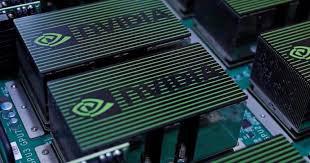You are here
The computer inside your computer
By Jean-Claude Elias - Jan 17,2019 - Last updated at Jan 17,2019
You can think of it as a sub-computer, or a computer within a computer. Whereas the main machine’s brain is referred to as CPU (Central Processing Unit), that of the sub-computer is known as GPU (Graphic Processing Unit).
The importance of the GPU inside your laptop or desktop computer cannot be overestimated; it is the one that generates the image you see on your screen. Visuals have always been important in computers, but they are now becoming more and more important, with the intensive focus on audiovisuals in most everything we do with the machines. Hence the paramount importance of the GPU, or simply put the graphic card, in layman’s terms, the “board” on which the GPU is installed.
A comprehensive story about GPU would largely exceed the scope of this column. Besides, there is no need to study every single aspect of graphics cards to choose the one that is right one for you, the one that is most adapted to your needs and to your budget.
The GPU inside any computer made after 2015, however inexpensive or simple it may be, will easily satisfy the graphic needs of the typical user, and even a bit more. Indeed, writing, browsing the web, e-mailing, listening to MP3-encoded music or watching video clips on YouTube, all these activities do not require particularly powerful GPUs. In normal cases you even don’t have to think about it. Even using Photoshop in a semi-professional manner is possible.
However, if you do intensive video editing, if the screen of your computer is a fancy 4K, if you use Photoshop or Illustrator as a professional and before anything else if you are a hard-core gamer, then you need a powerful, advanced graphic card. A standard one just won’t do.
There are essentially three manufacturers of GPUs in the IT world: Nvidia, AMD and Intel. Other hardware designers buy the GPU from these three and integrate them in their graphic cards, giving them their names. These are MSI, Asus, Gigabyte, EVGA or Palit, to name a few. Again, this goes inside your computer, be it a laptop or a desktop model. Understandably there are models specifically designed for laptops and others for desktops, given the difference in physical size and electrical requirements.
Graphic cards present two main characteristics: Their power or speed, and the amount, the size of memory they are fitted with. Obviously the more of each, the better. Or is it so?
It is a typical case where “more” is not necessarily better. To start with there is cost. High-end, very powerful graphic cards are expensive, very expensive. Up to $3,000 in the case of the Nvidia’s GTX Titan Z. You can buy three or four good entry-level laptops for that kind of money. Naturally this card is for desktop computers, not laptops.
The second issue with very powerful graphic cards is the amount of heat they dissipate and the noise they generate when the cooling of the device is done through moving fans. This is not a minor consideration if you intend to use the computer in a quiet environment. For all graphic-intensive applications except for gaming this is usually not a problem. Gamers, indeed, can easily cope with the extra noise!
To overcome the overheating and fan noise issue manufacturers often — but no always — propose the same model but with a passive heatsink instead of fans, to ensure proper cooling, Again this comes at an extra price and sometime even at an extra weight. The noise-free, fan-free solution is usually adopted by graphics designers who need the most powerful graphics but cannot stand the noise.
Usually computer makers indicate precisely which graphic card is included in the machine they are selling you, which should help you make the right decision. Otherwise talk about it with the salespeople, explaining your exact needs and what usage you make with your computer. They should be able to advise you.
Related Articles
A new technology is making it more and more difficult to believe what we see on the web, and even on regular satellite TV channels.
Of the four different physical formats of computers available on the market, and for the third year in a row, laptops have constantly been t















